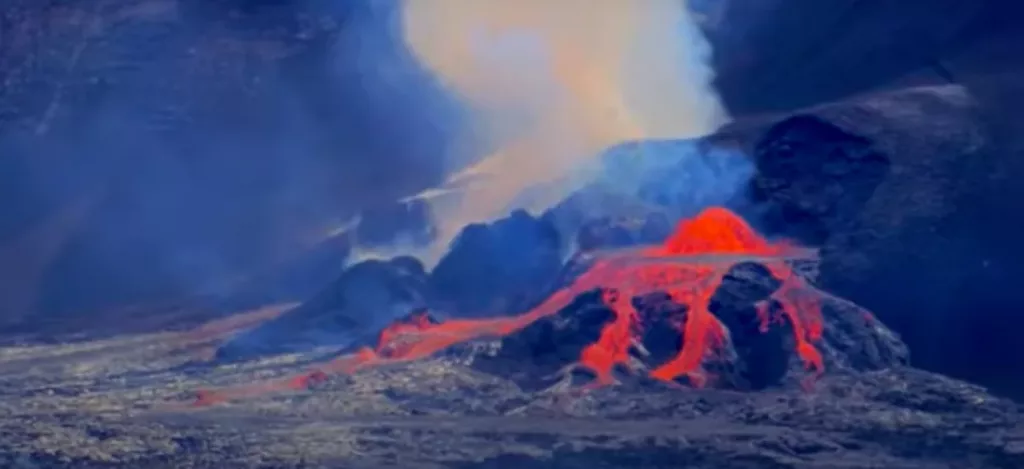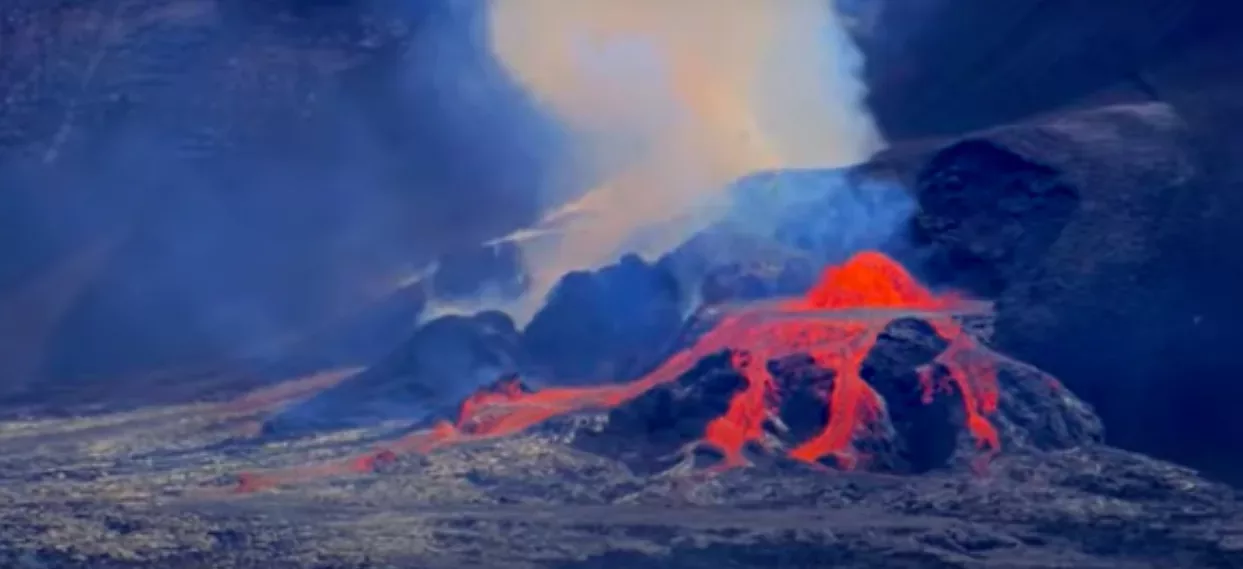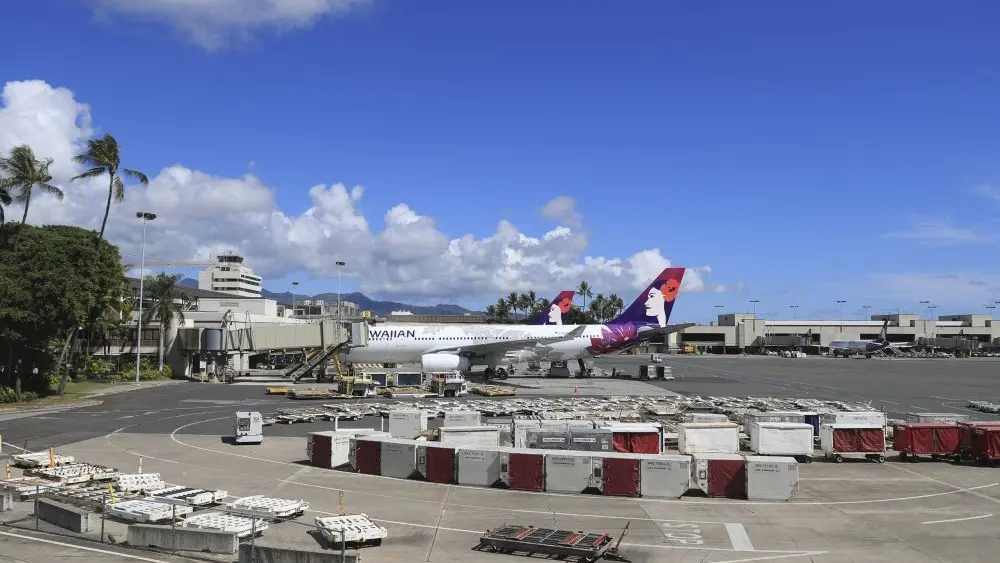Episode 20 of Kīlauea’s latest episode ended at 9:58 p.m. last night after 4.5 hours of sustained fountaining. The Halema’uma’u eruption is currently paused.
The sustained fountaining phase of episode 20 began at 5:28 p.m. yesterday. Lava fountains and flows erupted from both vents, but the north vent was much more active than the south vent during all phases of episode 20. Fountains from the north vent quickly reached estimated heights of more than 500 feet. Fountains from the south vent reached heights of up to about 65 feet (20 meters). It is currently estimated that lava flows from this episode covered less than half of the Halema’um’au crater floor. The sustained fountaining phase was preceded by almost 31 hours of precursory low-level activity that included gas-pistoning events in the north vent that produced low lava dome fountains, overflows, and drainbacks, as well as sluggish lava flows from the south vent.
The end of episode 20 fountaining activity was accompanied by a rapid change in summit tilt from deflation to inflation, along with a rapid decrease in tremor. The Uēkahuna tiltmeter (UWD) recorded approximately 6 microradians of deflationary tilt between the start and end of episode 20 fountaining.
Kīlauea’s current eruption in Halemaʻumaʻu crater within Kaluapele (the summit caldera) began on December 23, 2024. There have now been 20 episodes separated by pauses in activity. All eruptive activity remains within Hawaiʻi Volcanoes National Park. No significant activity has been noted along Kīlauea’s East Rift Zone or Southwest Rift Zone.
Each episode of Halemaʻumaʻu lava fountaining since December 23, 2024, has continued for 13 hours to 8 days and episodes have been separated by pauses in eruptive activity lasting less than 24 hours to 12 days.
No changes have been detected in the East Rift Zone or Southwest Rift Zone.
Kīlauea Volcano Alert Level/Aviation Color Code remain at WATCH/ORANGE. All current and recent activity is within Hawaiʻi Volcanoes National Park.
Photo credit: USGS






